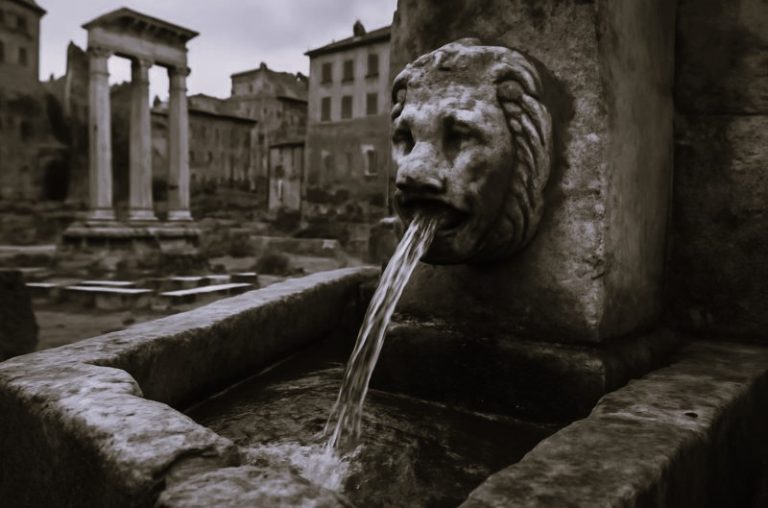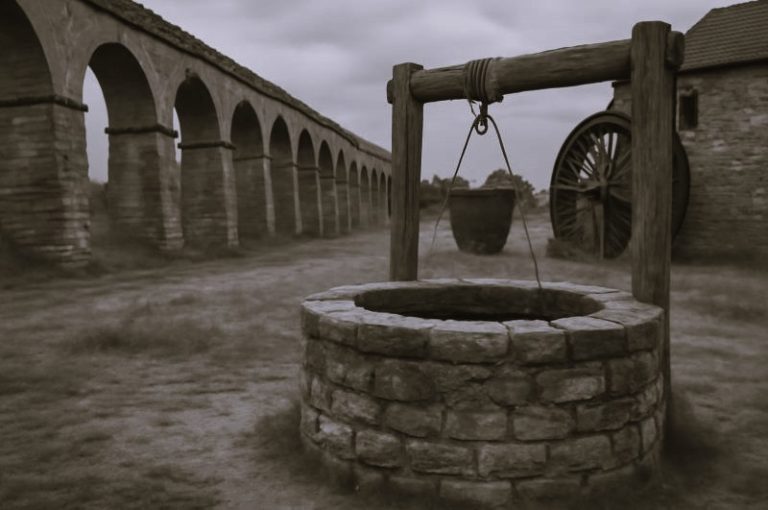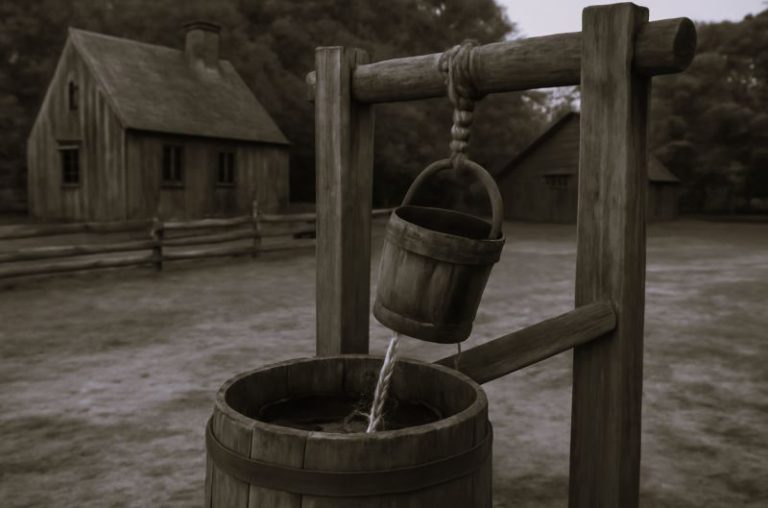
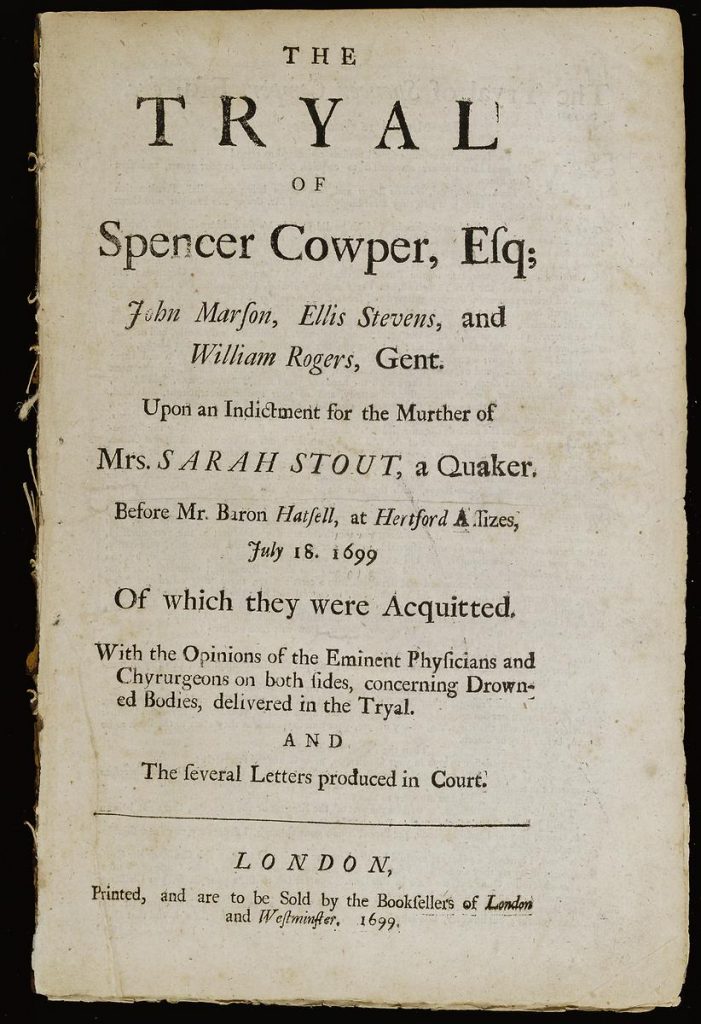
Forensic medicine, also called “medical jurisprudence” or “legal medicine,” emerged in the 1600s.
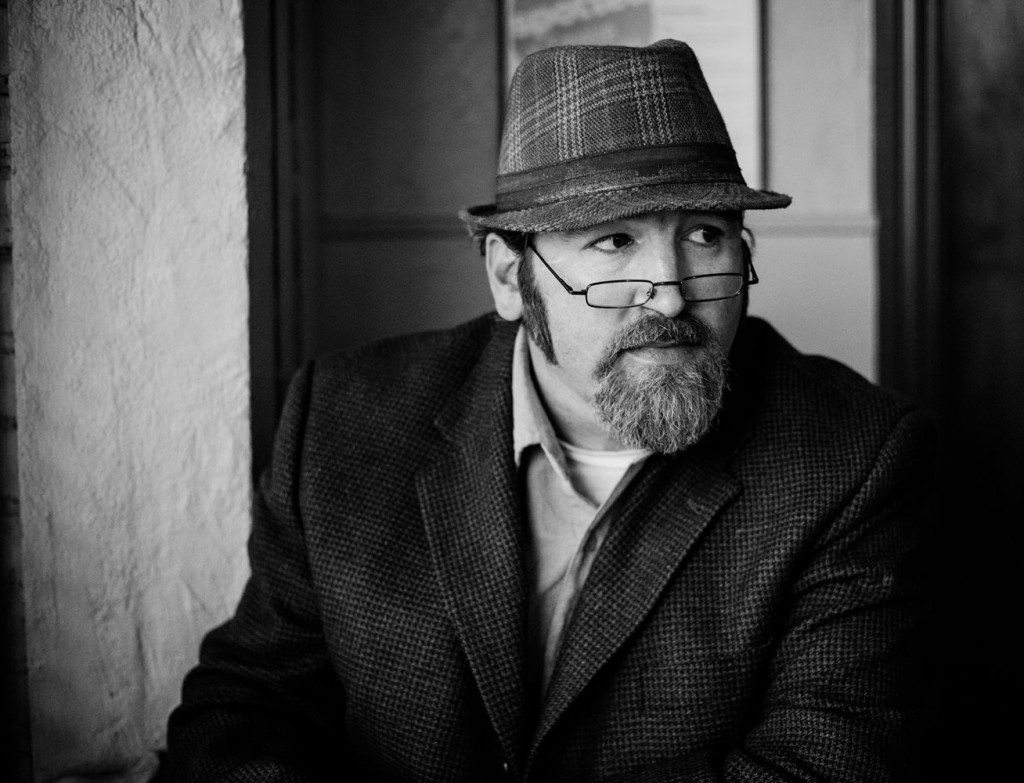
Curated/Reviewed by Matthew A. McIntosh
Public Historian
Brewminate
The Rise of Forensics
Overview
As European nation-states and their judicial systems developed, physicians and surgeons participated more frequently in legal proceedings. By the late 1700s, medical jurisprudence had become a standard subject in the medical curriculum. In the early 1800s, Parisian medical professor Mathieu Orfila and others began to intensively study poisons and the decomposition of bodies.
To win acceptance, aspiring medical experts had to make their procedures, accomplishments, and themselves, visible. In the university, laboratory, courtroom, press, and even the pages of the medical treatise, forensic medicine had a theatrical aspect. The medical witness, the eminent professor, the autopsist, and the toxicologist all sought to dramatize their methods, findings, and professional identity.
Medico-Legal Questions
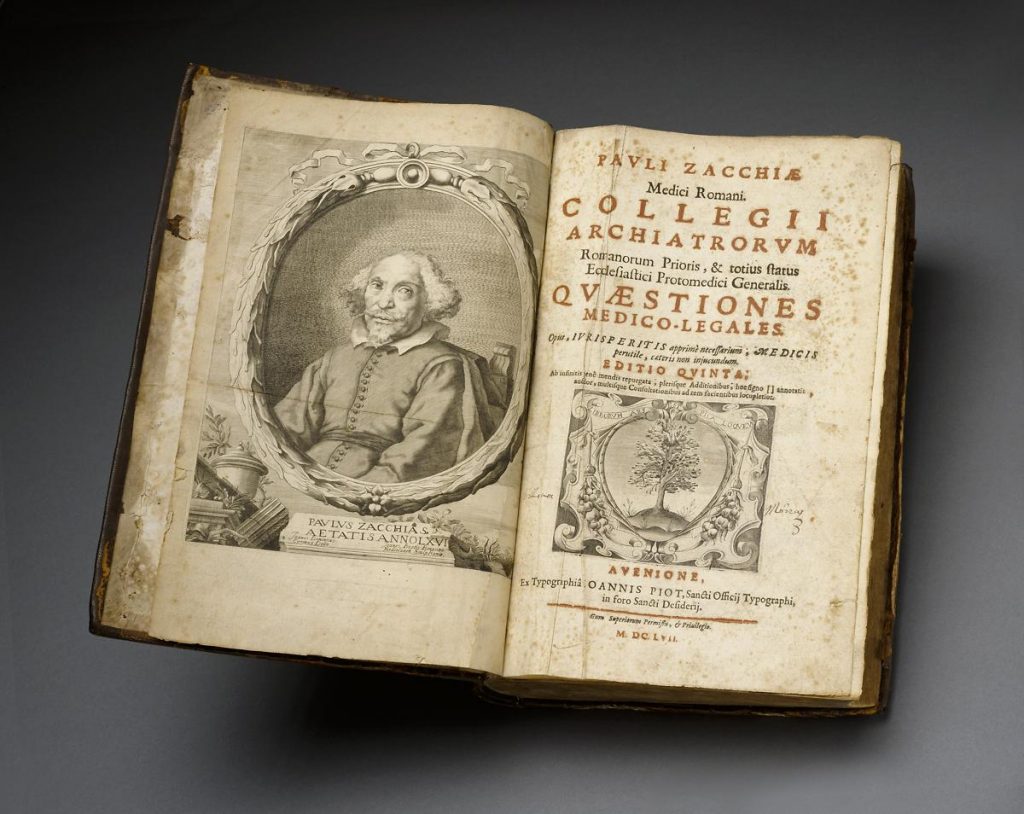
Forensic medicine first appeared as a distinct subject in works such as Paolo Zacchia’s Questiones Medico-Legales (1621). These early treatises discussed medical questions commonly treated in courts: How could one determine whether an infant was stillborn or the victim of infanticide? Whether a woman was a virgin? Whether a body found in water was someone who had drowned or the victim of a disguised homicide?
The larger issues raised by the first wave of forensic treatises are still debated: What methods produce reliable knowledge? Who should we accept as an expert in a court of law? What role should experts play in criminal investigations, civil cases, and government policymaking? What constitutes a good society—and what role can forensic medicine play in achieving it?
Proliferating Specialties

In the early 1800s, forensic medicine was not divided into distinct disciplines. Physicians and surgeons who performed autopsies and testified in court depended on a variety of sources for their income and provided expertise as needed. No regular system of payment was provided for expert testimony, laboratory analysis, or postmortem examination. Toxicology and forensic pathology were just emerging as distinct fields, and most autopsies were performed by physicians without any special training.
Today, forensics includes many disciplines, with dozens of specialties and subspecialties drawing on expanding scientific knowledge and technological expertise as shown in this chart.
The Coroner’s Report
“The said Thomas Fitzpatrick came to his death by A Pistol shot wound of the chest, said pistol being fired by Officer George Smith of 16th Precinct on the corner of 9th Avenue and Thirteenth street on December 25 ’83 about 6:30 AM and we are of the opinion that said shooting was entirely unjustifiable.”
—Juror’s verdict, coroner’s inquisition, New York City, January 7, 1884
“I made an autopsy on the body of the deceased. He was a strong muscular man 5 feet 6 inches tall, smooth shaven and hair closely cropped. A penetrating scalp wound was found on the Right Parieto-Occipital Suture about an inch and a half in length. A pistol shot wound of the Left Breast about two inches from the median line in the intercostals space was seen…. Death in my opinion was due to Exhaustion from Traumatic Pleuro Pneumonia following Pistol Shot Wound of the Left Breast.”
—W. J. G. Messemer, M.D., coroner’s inquisition, New York City, January 7, 1884

In late medieval England, it became customary to transcribe the coroner’s view of the body onto paper, in the form of a written inquest. Over the following centuries, the documentation associated with the coroner and the forensic medical report gradually expanded, a paper trail of transcripts, depositions, and death certificates.
Eighteenth-century Britain and America had only rudimentary policing structures, and physicians and surgeons were rarely called upon to participate in coroners’ inquests and criminal proceedings. Coroners’ reports and testimony were handwritten, short, and varied widely from case to case, and locale to locale.
Over the course of the 19th century, investigations of sudden or suspicious deaths became institutionalized and bureaucratic—police departments and court systems grew exponentially; nations began to require formal death certificates to aid in the collection of mortality statistics—and coroners began to employ physicians on a regular basis. Pathological anatomy and toxicology became more complex and sophisticated, and so did legal codes and police investigative procedures. The coroner’s report became more elaborate—the entire record of an investigation—and the legal and medical language of the inquest became more technical. The format of the printed form expanded; paperwork proliferated and became more standardized. In our time, this trend has continued, aided by computerization.
The Coroner’s Office on Trial

“Thanks to our see-no-evil coroner system, 5,000 murderers are going to commit their crimes without risk of detection in the coming year.”
—True magazine, 1958
The campaign to abolish the office of the coroner began, in America, in the late 19th century. As newspapers filled with reports of corrupt coroners who extorted money, accepted bribes, or slanted findings to cover up murders and other crimes, progressives demanded that elected coroners be replaced by appointed medical examiners—doctors trained in forensic pathology, hired on merit.
Over the first three quarters of the 20th century, some jurisdictions adopted the medical examiner system. Others retained the coroner’s office—although some coroners today are board-certified forensic pathologists. Unfortunately, some medical examiners, like some coroners, have not always met the highest scientific, legal, and ethical standards. Efforts to ensure the impartiality and competence of forensic investigations continue.
Both the coroner system and medical examiner system are currently used in the United States (PDF, 4.6 MB) with some jurisdictions using a hybrid of both.
Forensics on Trial

Cause and manner of a death are not always evident—even after visual examination and dissection of the body. Over the centuries, forensic medicine has developed technologies of visibility, ways of seeing things that would otherwise be undetectable.
- Post-mortem examination helps us look into the human body for concealed wounds, foreign objects, and other evidence.
- Chemical analysis helps us see invisible traces of poison, establishes the identity of body, body parts and fluids, and helps link the victim’s body to the perpetrator and the crime scene.
- The microscope helps us see tiny lesions, crystals, microbes, and distinguish hairs and fibers.
- Spectroscopic analysis of blood, tissues, and material found on or near the body, helps us distinguish and match trace elements that link the body of the victim, crime scene, and perpetrator.
But no method is infallible. The tests and procedures of forensic medicine have not always stood up to the scrutiny of judges, expert witnesses, lawyers, professional peers, and the public. Over time, the experience of forensic medicine in the courtroom has led to improvements in science, technology, and investigative procedures. But the process has been uneven—scientific experts have at times been suffered embarrassment—and forensic science has not always prevailed.
Upon a View of the Body
Overview

“A dead body tells no tales except those it whispers to the quick ear of the scientific expert, by him to be reported to the proper quarter.”
—Sir Andrew Douglas Maclagan, British professor of medicine, Edinburgh University, 1878
In cases of homicide or suspicious death, in medieval England, the coroner, an appointed official who had no medical training, was required to make “a view of the body,” a legal, visual inspection. Since then, medical professionals have played an increasingly important role in making views of the body. Physicians and surgeons have developed methods of seeing into the body through autopsy and post-mortem examination—making visible what the untrained, unequipped eye cannot see.
Post-Mortem Examination

The Autopsy
“The mind of the operator should be at the tip of the knife….”
—William S. Wadsworth, M.D., American coroner’s physician, 1915
Post-mortem dissection, or autopsy, was among the earliest scientific methods to be used in the investigation of violent or suspicious death. Autopsy remains the core practice of forensic medicine. The postmortem examiner surveys the body’s surface, opens it up with surgical instruments, removes parts for microscopic inspection and toxicological analysis, and makes a report that attempts to reconstruct the cause, manner, and mechanism of death. These clips from training films show some of the procedures of postmortem examination.
Tools of the Trade
The post-mortem examiner visually surveys the body’s surface before opening and entering the body with the help of a scalpel and other instruments. After visual examination of the body cavities, the examiner removes parts for chemical analysis, inspection with a microscope, and other tests. Tools and tool kits specially adapted for use in autopsy first appeared in the early 19th century.
Forensic Specimens
For centuries, anatomical specimens from the bodies of crime victims have been used as teaching tools and souvenirs of interesting or important cases. These specimens demonstrate various types of traumatic wounds of the heart, kidney, and stomach. They were prepared in the 1930s by the New York City Medical Examiner’s Office.
Changes after Death

Physicians and surgeons first gained practical knowledge of death and decomposition through handling and dissecting bodies obtained for anatomical study. Over the course of the 19th and 20th centuries, the study of the decomposed body and body parts—the effects of time, environment, and manner of death—became a vital part of forensic science.
Fauna of the cadaver and time of death
In the 19th century, medico-legal researchers began studying patterns of insect colonization of the cadaver. Entomology, the study of insects, became one of the forensic sciences. By identifying the particular stages that insects go through as they develop on a dead body, and the succession of different species, forensic investigators attempt to determine where a victim died and estimate the time elapsed since death. These adult specimens represent some of the different insect species that colonize a cadaver.
The body farm: studying the science of decay
The Forensic Anthropology Center, at the University of Tennessee, Knoxville, conducts research into the postmortem decomposition of the human body. At the Center scientists study how variations in temperature, exposure, humidity and other environmental conditions affect cadavers and body parts. Their research has helped improve investigators’ ability to estimate time of death and to identify individuals from skeletal remains. The Center also maintains a collection of documented human skeletons and has developed software that uses data from thousands of skeletons. Statistics from the database give investigators baselines that help them estimate the race, sex, and stature of unidentified bodies.
Laboratory Views
Overview

“The certain test of 1820 is no longer the certain test of 1840; and who can answer what this will be in 1860? Until chemistry becomes a fixed science, and the action of every possible combination of substances has been tried, how can we be sure of our facts, and confidently prove a negative? Every…test is valid, till a fallacy is discovered in it.”
—London Medical Gazette, discussing the Marsh test, 1840–1841
The cause and manner of a death are not always evident, even after visual examination and dissection. From 1800 onward, scientific investigators continually devised procedures and instruments—technologies of visibility—to reveal what the naked eye could not see.
Chemical analysis helped detect traces of poison in the victim’s body. Microscopes made it possible to see tiny lesions, crystals, and hairs. Spectroscopic analysis of blood and other materials helped match trace elements linking victim and killer.
Toxicology

As commercially manufactured poisons became increasingly available in the 19th century, poisoning became known as a “modern” and disturbingly hard-to-detect method of killing. In response, researchers developed toxicology as a specialized field of forensic medicine, and devised specific tests for poison, most famously the 1836 Marsh Test for arsenic.
The new science of toxicology was plagued by difficulties. In the courtroom and laboratory, seemingly reliable tests were shown to be flawed. But, over time, toxicology’s trials led to better knowledge of the action of poisons and better methods of chemical analysis.
Retail poisons Toxic cures
The Industrial Revolution introduced cheap poisons into homes, factories, and farms. To prevent accidents, poisons were sold in colorful and distinctively shaped bottles. But toxic substances were also used in widely available medical preparations, which poisoners could use to dispatch their victims.
Microscopy

John Glaister Jr., M.D., A study of hairs and wools belonging to the mammalian group of animals, including a special study of human hair, considered from the medico-legal aspects, Cairo, Egypt / National Library of Medicine
Mid-19th-century improvements enabled physicians to use microscopy in criminal investigations. The microscope made it possible to view tiny lesions, crystals, microorganisms, and the characteristics of hairs and fibers. By the mid-20th century, investigators were using microscopes to study tissues, wounds, and fluids from victims and suspects; to identify poisons in and around the victim’s body; to examine minute amounts of trace elements; and to link the victim’s body to the perpetrator and crime scene.
Spectroscopy

Spectroscopy was born in the mid-17th century, when Isaac Newton discovered that a prism divides white light into constituent colors. Subsequent researchers discovered that specific substances, subjected to flame, give off unique patterns of light that show characteristic “emission” bands and “absorption” lines when cast through a prism.
By the 1870s and 1880s, spectroscopy seemed a promising new forensic technology. Further work on spectra analysis led to spectrophotometry and, more recently, mass spectrometry. In tandem with gas chromatography, mass spectrometry is now often used to identify and match organic and inorganic substances for forensic purposes.
Technologies of Surveillance
Overview

In the late 19th and early 20th century, forensic science was increasingly applied to the body of the suspect. The populations of cities and nations were growing rapidly, and so did national and colonial administrations, policing, and penal systems, which adopted (and grew through the use of) forensic methods of identification and detection. Officials searched for ways to reliably identify individual colonial subjects, prisoners, habitual criminals, and perpetrators.
The late 19th and early 20th century saw the emergence of new forensic technologies and institutions—the collective project of scientists, reformers, and government officials. The proliferating growth of industry, cities, nation-states, colonial empires, mass immigration, and urban slums gave rise to new class, ethnic, national and political divisions, new opportunities for organized and disorganized crime—and spurred reformers to agitate for, develop, and implement technologies of identification, surveillance, investigation, and analysis, of persons as well as bodies and crime scenes. Fingerprinting and anthropometry (also called bertillonage) were developed, in part, as a way for imperial administrators, immigration officers, prison officials, and police to scientifically ascertain the identity of colonial subjects, immigrants, prostitutes, prison inmates and recidivists. But they were also used in criminal investigations, as a means of identifying criminal and victim.
With the popular press featuring lurid stories of horrific crimes and criminals, forensic scientists and reformers were well-positioned to offer solutions to the problems of crime. They called for and implemented ambitious plans to establish and nurture local, regional, and national police identification and investigation bureaus, as well as morgues, crime laboratories, courses of specialized training, and professional associations. Hand in hand with the introduction of new scientific approaches to criminal investigation, the entire criminal justice system—police, prosecutors, coroners’ offices, courts, prisons, and research universities—underwent an uneven and fragmentary process of institutionalization, modernization, and professionalization.
Bertillonage

The emerging field of criminology began focusing on the physical characteristics of the criminal in the second half of the 19th century. In Paris, Alphonse Bertillon, a police department file clerk who was the son of an eminent medical professor, developed a rigorous method of measuring and categorizing human beings. Known as “bertillonage,” the system used precise measurements, photographs, and notes to make a descriptive record of individual suspects.
Distinct Classes of Marks

“Fingerprints…have the unique merit of retaining all their peculiarities unchanged throughout life, and afford in consequence an incomparably surer criterion of identity than any other bodily feature.”
—Francis Galton, English polymath and eugenicist, 1892
Forensic science became increasingly preoccupied with the body of the suspect in the second half of the 19th century. As cities, nations, and empires expanded, officials sought ways to reliably identify citizens, colonial subjects, prisoners, and habitual criminals.
The first practical application of fingerprinting as a unique individual identifier came in the 1860s. Sir William Herschel, a colonial administrator in British India, used fingerprints to detect false pension claims. In an 1892 case in Argentina, Juan Vucetich became the first investigator to use fingerprints to help secure a conviction for murder.
A useable classification system was necessary before forensic fingerprinting could be put to practical use. In the 1890s and early 1900s, Vucetich in Argentina, and E. R. Henry in British colonial India and Great Britain, separately devised such systems. After a series of dramatic cases proved its merits, fingerprinting spread rapidly.
Double Exposure: The Buck Ruxton Case and the Triumph of Forensic Reconstruction

On September 14, 1935, Dr. Buck Ruxton, in a jealous rage, murdered his wife Isabella, in their house in Lancashire, England. He also killed Mary Rogerson, a nursemaid who probably witnessed the attack on her mistress.
Dr. Ruxton dismembered his victims, tried to destroy their fingerprints, birthmarks, and other features, and then scattered the remains. When police recovered the jumbled body parts, the case became known as the “Jigsaw Murders.” Circumstantial evidence implicated Ruxton, but prosecutors needed to make a precise identification of the victims. Using photonegative portraits of Mrs. Ruxton and Mary Rogerson to aid in the reconstruction, forensic pathologists John Glaister Jr. and James Couper Brash sorted and reassembled the body parts.
The team of pathologists, dentists, entomologists, and other specialists worked together to make the bodies of the victims—and perpetrator—visible and identifiable. At the same time, the figure of the forensic expert—Dr. Glaister especially—became visible in court and the press. Celebrated as a landmark of forensic science, the Ruxton case fostered public faith in scientific crime investigation.
Three-Dimensional Views: The Nutshell Studies of Unexplained Death

“Capt. Lee was a perfectionist in every sense of the word.…I don’t think there was any detail too small or too insignificant to be given careful, painstaking consideration.”
—Erle Stanley Gardner, American mystery writer, 1962
Forensic science was the lifelong passion of Frances Glessner Lee, heiress to the International Harvester fortune. In the 1940s and 1950s, Mrs. Lee employed expert artisans to help her create eighteen miniature crime scenes based on actual incidents.
Inspired by the forensic dictum “convict the guilty, clear the innocent, and find the truth in a nutshell” Mrs. Lee dubbed her intricate, dollhouse-sized creations the “Nutshell Studies of Unexplained Death.” The Nutshells were designed as teaching aids for training crime investigators and are still used by the Office of the Chief Medical Examiner of Maryland, in Baltimore.
For her dedication to the advancement of forensic science, Mrs. Lee received an honorary appointment as captain in the New Hampshire State Police.
The New Forensic Science
Overview

New technologies and methods are transforming the field of forensic science. Today scientists use DNA tests, high-performance liquid chromatography, mass spectrometry, 3-D computer imaging, and other advanced technologies to reconstruct crimes and accidents. The new forensic science can distinguish trace elements and organic materials down to the level of only a few hundred molecules.
Given the sensitivity of the instruments, forensic scientists need to adhere to rigorous procedures and standards to ensure that their results are valid and reliable—and can withstand scrutiny in courts of law and public opinion. Used carefully and evenhandedly, the new forensics can help uncover hidden crimes, convict the guilty, and exonerate the innocent. Sophisticated science now plays a key role in identifying victims of crimes, accidents, disasters, and wars—and provides reassurance, closure, and emotional support for bereaved survivors.
DNA Forensics: Making the Molecular Body Visible

Forensic biologists conduct scientific analysis of blood, semen, saliva, and other forms of biological evidence. Their work provides crucial information in criminal investigations, paternity cases, and a variety of civil matters. During the past 20 years, DNA analysis has emerged as an indispensable method of identifying suspects and victims of crimes. Scientists continue to develop ever more sophisticated methods of identifying degraded or aged remains, along with protocols for managing data in cases where large numbers of people die or suffer injury.
Forensic Toxicology: The Science of Chemical Detection

Scientists and researchers continue to improve and discover new means of separating, analyzing, and identifying chemical substances. Techniques are becoming more specialized, and technologies are being combined to create ever more sensitive and sophisticated tests.
Two increasingly important approaches to chemical detection and identification are gas chromatography, a method of separating substances, and mass spectrometry, a method of measuring the mass of molecules. These techniques allow investigators to identify with reasonable certainty—admissible in a court of law—minute amounts of toxic substances found in the bodies of victims or in trace evidence collected at crime scenes.
Forensic Radiology: Making the Body’s Interior Visible

“Forensic radiology comprises the performance, interpretation, and reporting of those radiologic examinations and procedures that concern the courts and/or the law.”
—B. G. Brogdon, M.D., American professor of radiology, 1998
Radiology can make images of what is hidden inside the body and is a powerful tool for the forensic investigator. Using X-rays, computed tomography (CT), magnetic resonance imaging (MRI), and other technologies, radiologists can track projectile paths inside the body, help to identify victims whose remains are degraded, and create 3-D images of the human form. Forensic odontologists analyze dental radiographs and use other imaging technologies to identify deceased individuals and to examine evidence related to teeth.
Human Rights and Forensic Science

Forensic science now plays a vital role in exposing political murders and governmental, military, and paramilitary atrocities. Forensic human rights investigations are underway in over 30 countries, conducted by nongovernmental organizations, national truth commissions, and international tribunals. Using archaeology, forensic anthropology, pathology, odontology (the study of dentition), ballistics, computer modeling, and DNA analysis, investigators have documented mass murder and genocide, and identified victims and perpetrators.
Forensic investigations have made the “disappeared”—victims of murder and torture—visible, empowered survivors, corrected the historical record, and exposed cover-ups. In countries traumatized by brutal regimes, human rights forensics promotes democratization and the rule of law. Yet few suspected perpetrators come to trial and even fewer are convicted. In places where human rights violators retain power, forensic teams work at great personal risk, in the face of violence and intimidation.
The global reach of forensics
The Forensic Anthropology Team (EAAF in the Spanish acronym) became an international phenomenon in the early 1990s, starting projects in El Salvador and the Philippines, where governmental military and paramilitary forces had committed political murders and atrocities. Since then, EAAF members have conducted investigations throughout the Americas, Asia, Africa, and Europe. Members have presented their findings as expert witnesses in criminal trials, and before international tribunals and national truth commissions.
Inspired partly by EAAF, other human rights forensics groups have emerged to conduct investigations into political murder, torture, and genocide. Today, the International Forensics Program of Physicians for Human Rights, Inforce, the Latin American Forensic Anthropology Association, and local nongovernmental organizations are active in many countries.
Riding the Forensic Wave
Overview

Science and the law have always had theatrical elements. To command attention and gain acceptance, scientists demonstrate their findings and credentials, and present themselves as authorities before courts of scientific opinion, courts of law, and courts of public and private opinion. But practically from the inception of the field, another group of people have used stories about forensic science to make the body visible and legible. Writers and publishers, and later directors and producers, have made murder and the dead body, and the procedures of forensics, visible to a wider public—in the form of entertaining non-fictional and fictional narratives.
Since the 17th century, narratives have mixed violence and murder, police and scientific investigation, and courtroom drama—and have attracted a mass audience. But the intensity of interest in forensics is now vastly greater. Forensic entertainments have achieved an unprecedented level of popularity.
The new forensic books, films, and television shows differ markedly from their predecessors:
- Death and the dead body are depicted in graphic detail. The camera shows the wounds, disfigurement, and decomposition of the body. (Older films and books didn’t linger on the details.)
- The forensic scientist or team is the hero; the decisive action occurs at the crime scene and in the laboratory. (In older murder mysteries, an amateur sleuth, brilliant private detective, or police inspector is the protagonist.)
- “Hi-tech” science solves the mystery.
The forensic emphasis intensifies the experience of the crime narrative. Viewers get the pleasure of seeing moral order and reason prevail over evil and death through the procedures of science and law. The distress, disorder, and moral rupture of murder are enacted within a reassuringly formulaic structure. We get to satisfy a need to see death, disorder, and evil—which loom so large in our lives, but are veiled by legal and criminal procedures, and professionalized funerary practice. We enjoy exposing ourselves to physically and emotionally provocative images of death and the dead body. Today, millions of readers, filmgoers, and television watchers find such stories enormously appealing.
Forensic Spectacles and Entertainments

People have always been entertained by tales of violence. In the 1600s, cheap pamphlets found a mass readership with sensational accounts of heinous murders. Forensic medicine rarely played a role in these narratives. But in succeeding centuries, science slowly became more prominent—in fictional mysteries that featured scientific detectives like Sherlock Holmes, in true crime magazines, and in articles on scientific crime detection.
Scientific Sleuths
“When Sherlock Holmes whipped out his magnifying glass to examine a flake of Latakia tobacco found on the Smyrna rug in the Boscombe Valley affair, he became not merely a very charming character in detective fiction but an exponent of a whole new way of looking at life….”
—Henry Morton Robinson, author, 1935
“Sherlock Holmes was the first to realize the importance of dust. I merely copied his methods.”
—Edmond Locard, French forensic scientific expert, early 20th century

The detective story has been a staple of popular fiction since the 1840s. Influenced by the success of the Sherlock Holmes stories, the scientific detective enjoyed a brief vogue in the early 1900s. But, until recently, most fictional detectives solved their mysteries through interviews with suspects and witnesses, ending with the revelation of the killer’s identity, motive, and method. The mind of the solitary brilliant detective was the technology. Today, the investigator is often part of a team that uses forensic science, at the crimescene and in the laboratory, to solve the case.
Utopian Forensics

Glowing newspaper and magazine accounts of forensic technologies, real and imaginary, fueled public support for scientific crime detection.
Today, forensic entertainments have attained new heights of popularity. Unlike older tales of murder, modern mysteries cast the forensic scientist as the hero, display the victim’s body and its interior, and solve the case through science. Audiences can experience the distress, disorder, and moral rupture of murder in a reassuringly formulaic portrayal of legal and scientific order.
Originally published by the U.S. National Library of Medicine, 12.08.2014, to the public domain.




